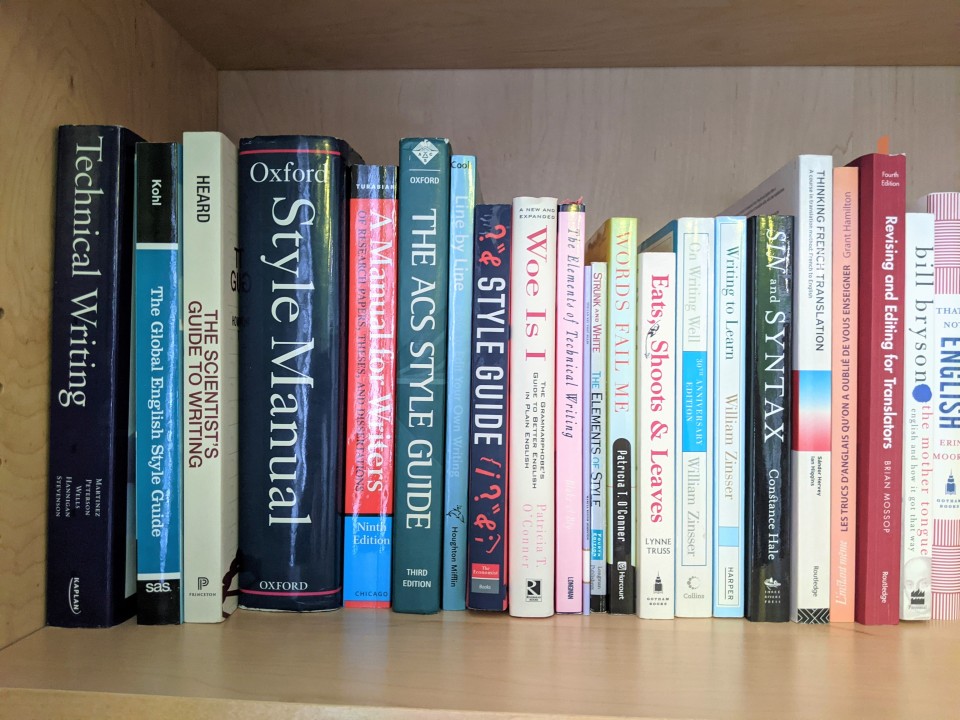
Resource list for defining your style set
This post provides supporting materials for the webinar Taking Charge of Your Style Set I gave for the American Translators Association's Professional Development series on June 8, 2021. These resources are relevant to participants investigating style in English only.
The webinar included a “how-to” for attendees to create a personal style set for any specific field, based upon essential resources such as standards, key industry bodies, and style guides. Using a reference like this quickly becomes routine and has the benefit of making you more of an authority. That in turn gives you the confidence to defend your choices to your clients, when necessary.
On style, two classics:
George Orwell “Politics and the English Language”
The Sense of Style: The Thinking Person’s Guide to Writing in the 21st Century by Steven Pinker
A list of style guides for your researching pleasure:
Chicago Manual of Style: A Guide for Authors and Editors – 17th edition
The Economist Style Guide – 12th edition
The New Oxford Style Manual (combination of The Oxford Guide to Style and Hart’s Rules)
The Global English Style Guide, John R. Kohl (Highly recommended! How to write English for translation.)
American Medical Association Manual of Style: A Guide for Authors and Editors – 11th edition
Society of Petroleum Engineers
NASA has a strong body of reference material for technical writers. This link leads to much, including their style guide.
Scientific Style and Format: The CSE Manual For Authors, Editors, And Publishers, Eighth Edition
And to conclude, an excellent article on style sheets
“Style Sheets: The Abbreviated Answer” by Tracy Dalton
I encourage you, translator, to take charge and produce consistent translations that follow modern usage guidelines, instead of any inconsistent, incorrect, or outdated usage and style you may see in your source texts. Adopting a consistent style adds value for clients, making it more likely you will succeed and grow out of crowded market segments.
Head of Content Marketing // Creating high-value content that stands out and gets results
2yGreat resource. Pinker has been on my to-read list for a while!
✅ Take the worry out of foreign filing and IP litigation with impeccable EN⇆DE patent translations 👉 Work with a patent translator that cares about your success #TranslationForSuccess
2yHi Karen, I missed the webinar. Will there be a recording available?
Owner and financial-legal translator, Premium Financial-Legal Translations, LLC, with more than 30 years' experience
2yWhat do you think of Butcher's Copy-Editing (Cambridge), Karen? I find it just as useful for translating as for editing/revising. And I'm glad to see the Mossop book in the photo. Every >En translator should have it on their bookshelf.
German to English translator (MA qualified) specialising in technical texts (engineering, scientific).
2yThis is a really useful list Karen - thank you!
Freelance translator of French books, art & museum texts, and more | English-language editor
2yGreat resources, Karen -- thanks for sharing! And thanks for your concise and insightful presentation today.